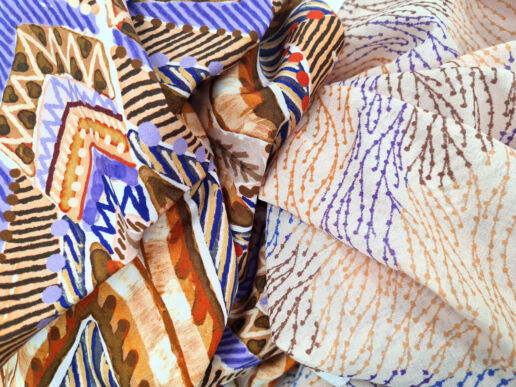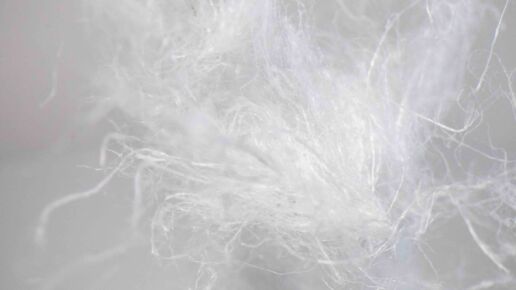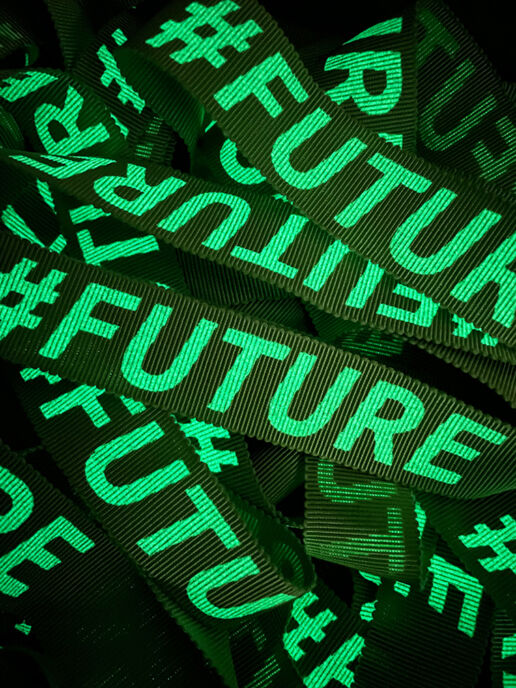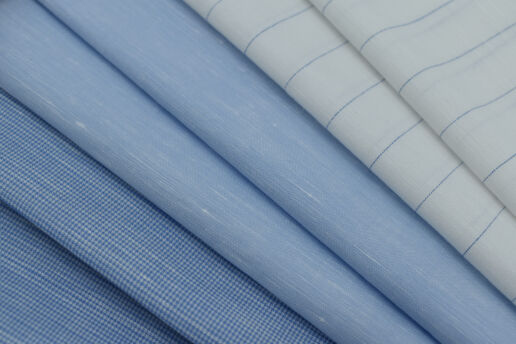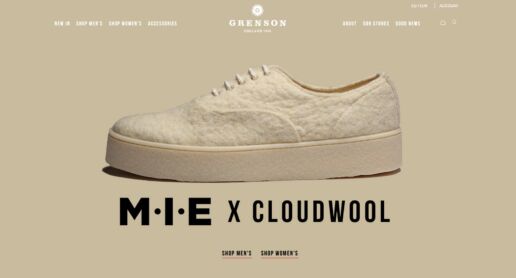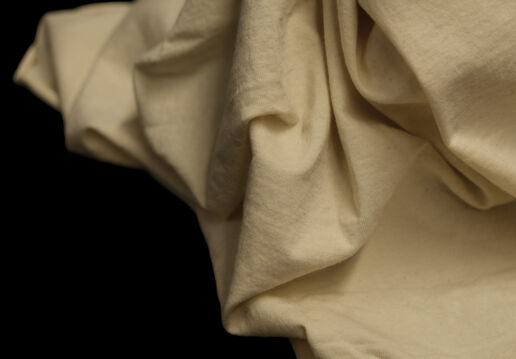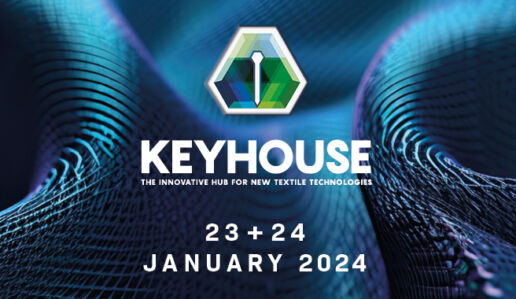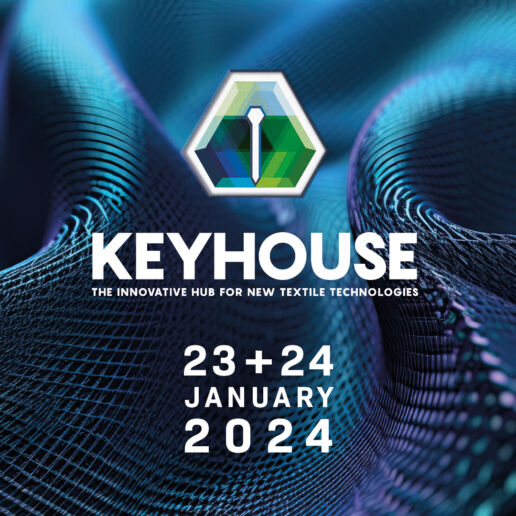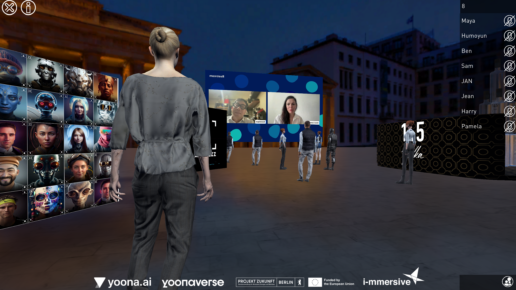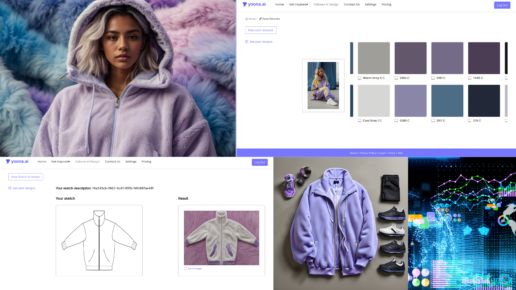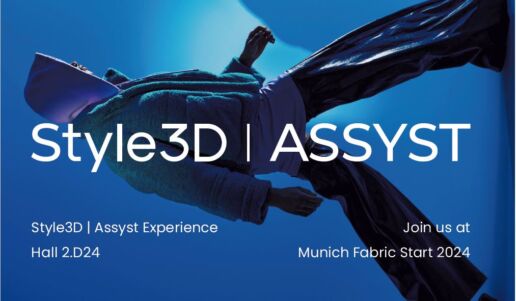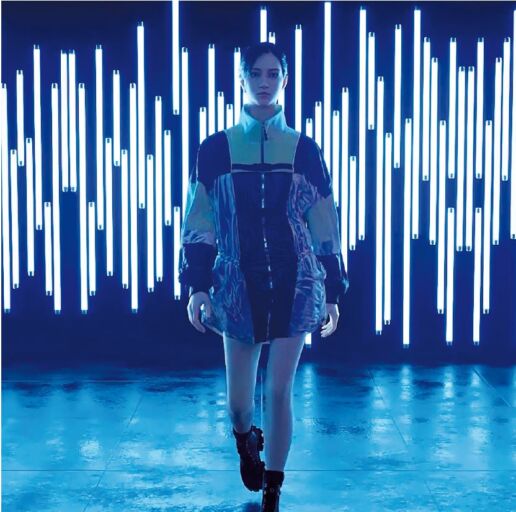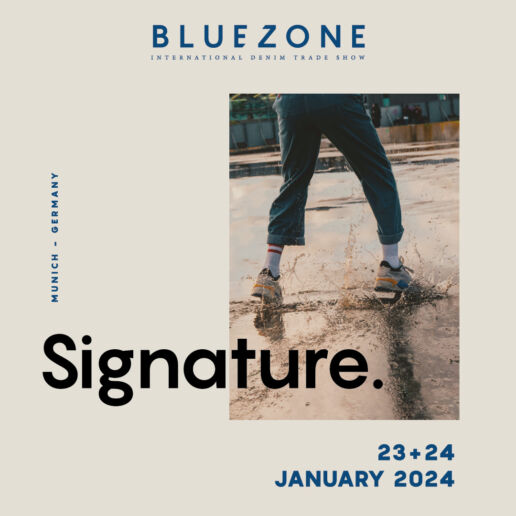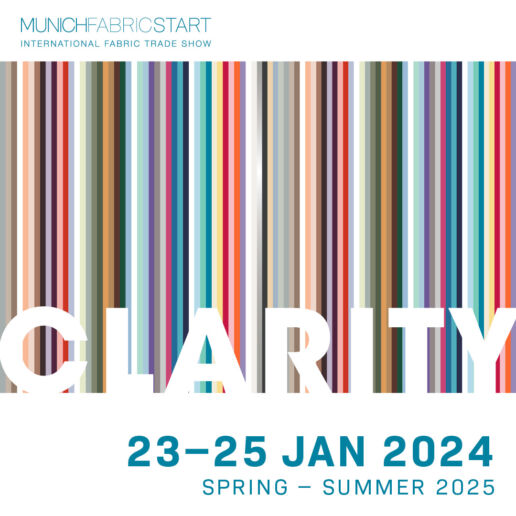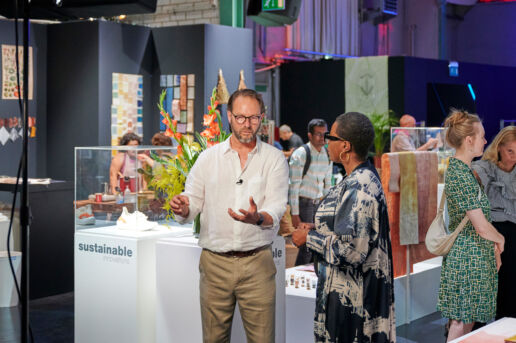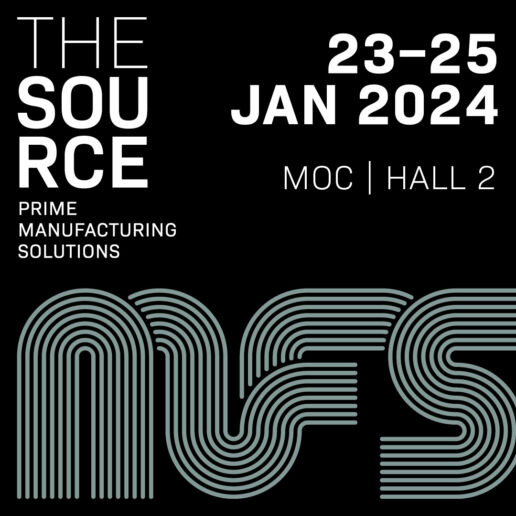Sustainability
Fabric Trends Spring.Summer 25 - Part II
In the FABRICS Area, around 600 international suppliers present their material innovations for all apparel segments. The complete product portfolio of fashionable woven and knitted fabrics made of wool, cotton, silk, blends and functional fibres is represented here. For the Spring.Summer 25 season, we present some highlights from international producers in our FABRICS blogposts:
DELFI
The Spring/Summer ‘25 collection is focused on fancy colours, inspired by a mexican vibrant influence. The growing importance of Ecosustainability in the manufacturing field has led the company to be GRS certificated and to introduce more recycled Nylon and Polyester fabrics too, as well as brand new ecological finishing process.
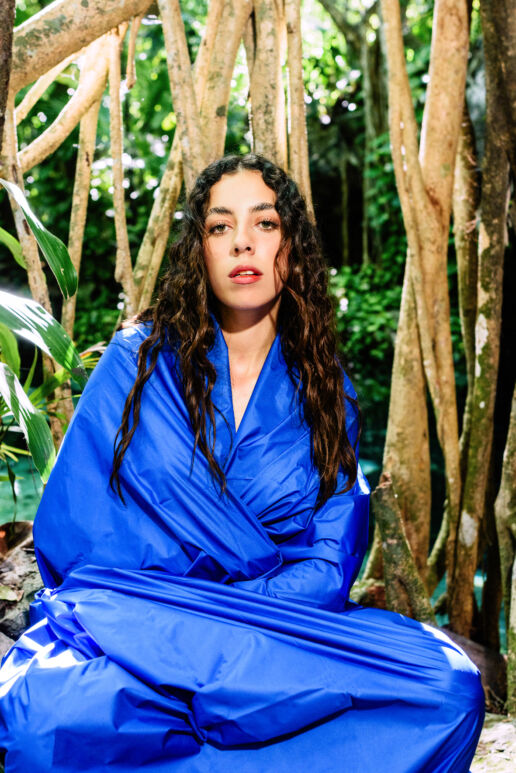
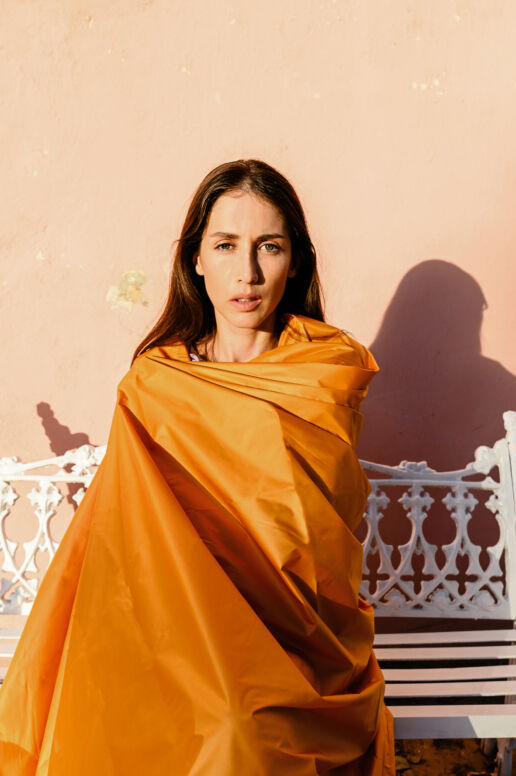

DUTEL CRÉATION
The new jacquard collection of DUTEL for the Spring/Summer 2025 season has been built around four main themes: Persane – a sober and refined theme inspired by Orientalist influences; Pop Corn, a regressive and slightly offbeat spirit with vibrant colours inspired by Pop culture; Wibes – an ethnic and festive theme; and Brut – a sportswear theme in natural tones.
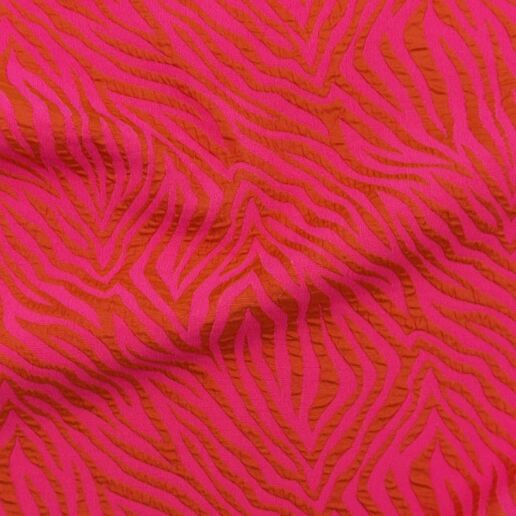
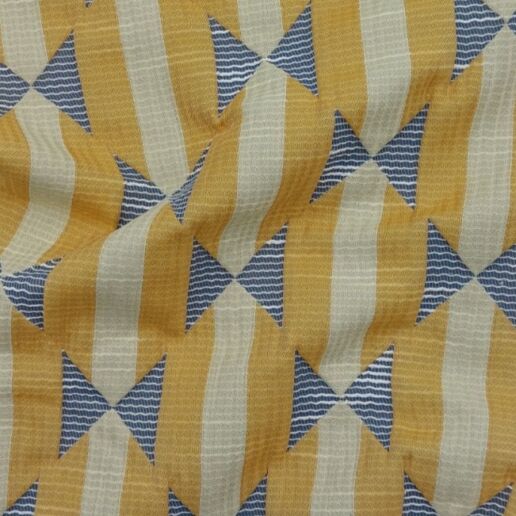
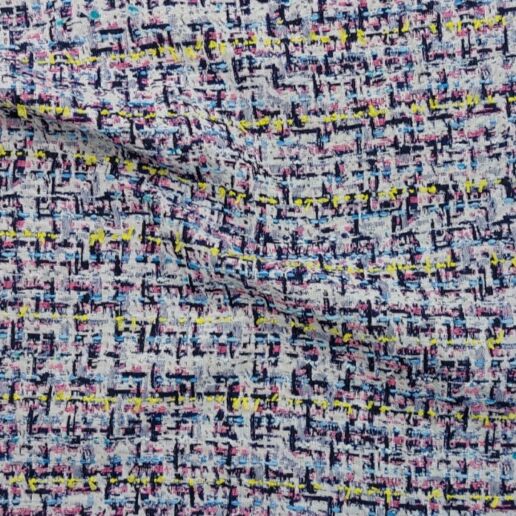
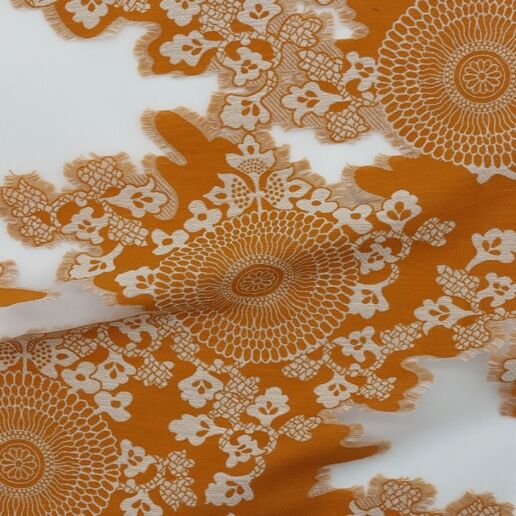
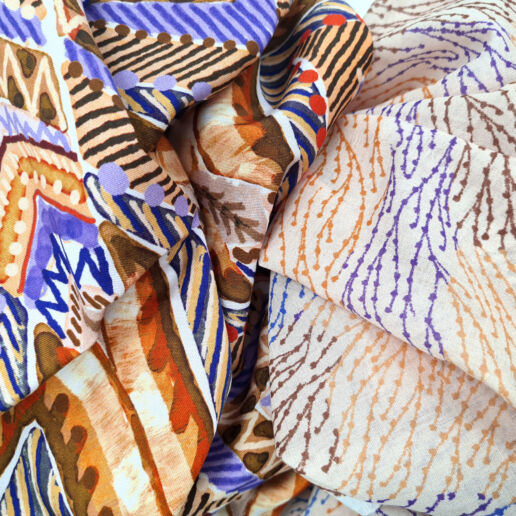
ECO-PRINTS
Discover Eco-prints’ innovative Sublime collection. It’s safe to say that a return to joy and lightness is in the air in the world of fashion! With more feminine prints and cheerful colors, Eco-prints is looking ahead to a brighter future. Spicy atmospheres evoke relaxation and travel, always with the desire to move forward. Come and discover their vision of this future new world on their stand.
ENGIN TEXTILE
Established in the 1960s, Engin Textile supplies fabrics to fashion brands, specializing in women’s and men’s outerwear and active sportswear. With a commitment to high-quality standards, the company offers a diverse range, including eco-friendly options like organic cotton and recycled polyester. Engin Textile’s state-of- the-art machinery ensures reliable production. Emphasizing customer satisfaction, the company continues to offer environmentally friendlyfabric choices.
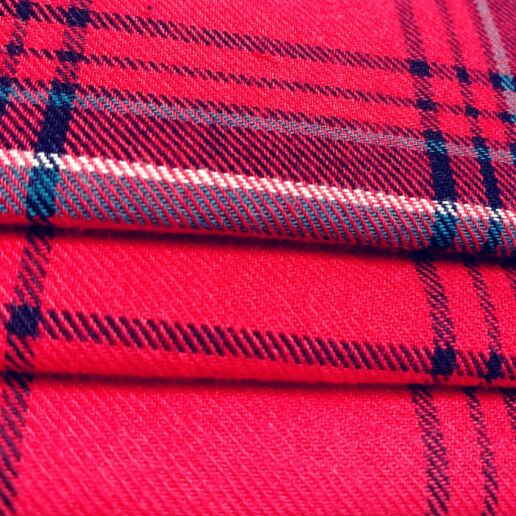
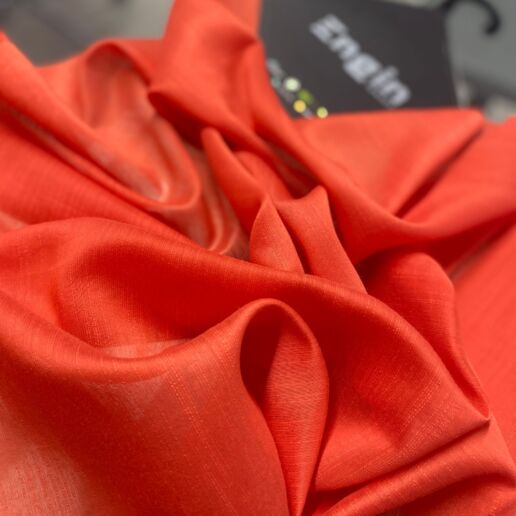
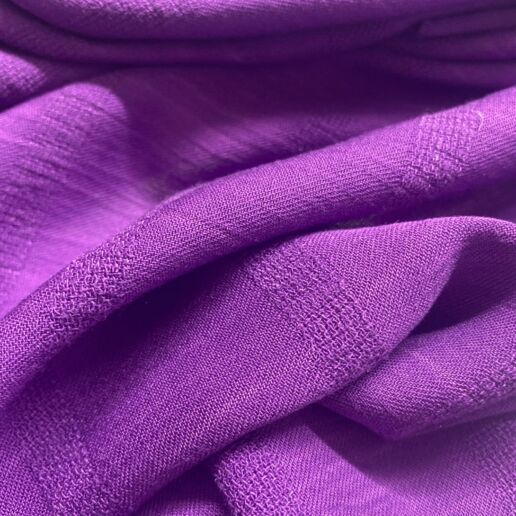
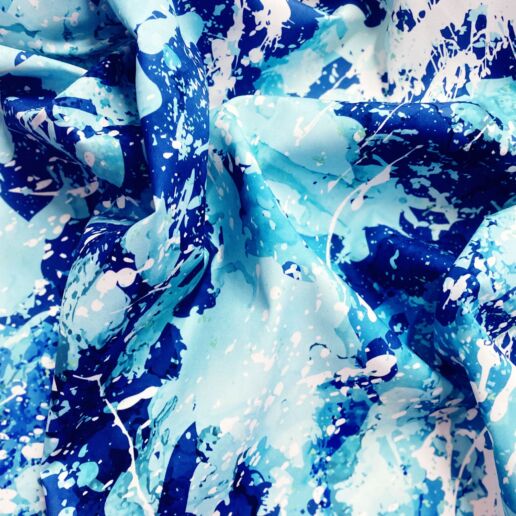
ERSAT TEXTILE
ERSAT TEXTILE is one of the most successful fabric producers in Turkey with an integrated factory from weaving till ready garment. They offer versatile production chains (Poliviscose, Polyester, Cotton, Linen, Wool blends with PES) and also produce mens- and womenswear for suits, jackets, pants, outerwear, dresses, shirts on recycle, Ecovero, GRS, GOTS bases with 2.500.000 mts capacity per month.
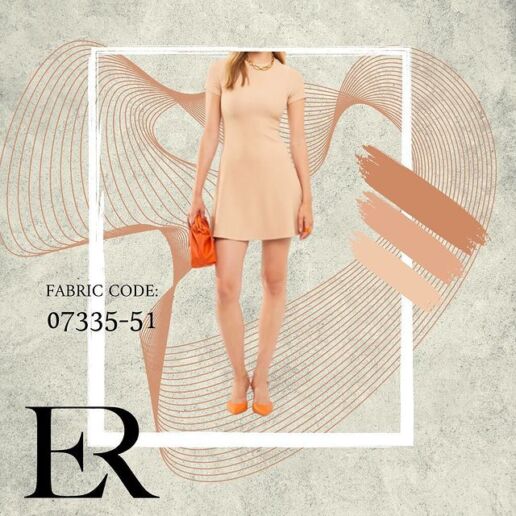
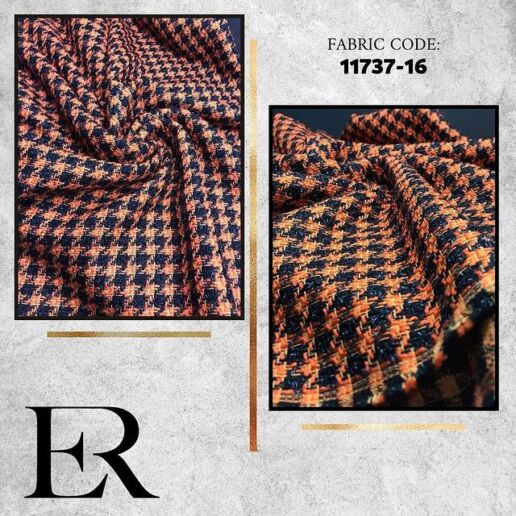
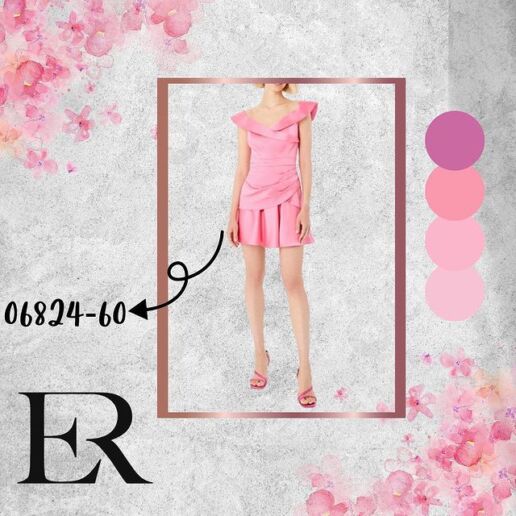
THIS MIGHT BE ALSO INTERSTING FOR YOU
Additionals Trends Spring.Summer 26 – Part 1
5. January 2025
The beauty of the Opposite Collection lies in its ability to tell a story.
KEYHOUSE NEWS – WKS
5. January 2025
WKS Sustainable Textile Solution has been the unique service provider along the entire textile supply chain for over 60 years.
TEXroad: Putting the data in circular textiles
4. January 2025
The Data Hub tackles challenges in the post-consumer value chain such as a lack of transparency in textile flows, inconsistent data shared between partners, and inefficient reporting to the public sector.
Venus In Fury of Sustainable Innovation
4. January 2025
Marking a seismic shift from traditional textile creation, Venus In Fury’s approach starts not with a sketch, but with a selection of natural materials like Dutch wool and seaweed.
KEYHOUSE NEWS – FELDE FIBRES
20. December 2024
This innovative quality offers unmatched fineness, handfeel, and appearance, unlocking new application possibilities and reviving the long-overlooked hemp plant.
LOOPER Textile Co. – A second life for unwanted garments
17. December 2024
Looper Textile Co. is a trusted partner in preparing garments for the next phase of their lifecycle. The bold ambition and strong heritage of this young company lies the understanding...
SPRING.SUMMER 26 FABRIC HIGHLIGHTS & MATERIAL NOVELTIES – PART II
16. December 2024
Beautiful and contemporary prints add fresh and vibrant touches to any garment. Wild silks are offered alongside tulles with low or zero formaldehyde.
New Fabric Collection of BLOOMATI by Carvema
15. December 2024
Innovation is at the heart of our collection. We have explored new textile technologies that bring futuristic properties to fabrics.
New Fabric Collection by Paulo de Oliveira
13. December 2024
Paulo de Oliveira is a reference in sustainable production, focusing on sustainable raw materials produced in Europe by ecological processes.
SPRING.SUMMER 26 FABRIC HIGHLIGHTS & MATERIAL NOVELTIES – PART I
12. December 2024
Fashionable woven and knitted fabrics made of wool, cotton, silk, blends and functional fibres are presented by our international suppliers..
The latest accessory developments for Spring.Summer 25 - Part I
Die neuesten Entwicklungen für Knöpfe, Bänder, Ziersteine, Verschlüsse, Futterstoffe, Spitze, Stickereien, Einlagen sowie Labelling und Branding-Solutions präsentieren rund 200 international führende Zutaten- und Accessoires-Anbieter in der ADDITIONALS Area auf der MUNICH FABRIC START.
ACHILLE VALERA LISSONI
Die neue Kollektion von Achille Valera Lissoni SS 25 präsentiert eine erneuerte Baumwoll-Farbkarte mit 10 neuen Trendfarben. Ein großer Teil der Kollektion besteht aus Naturfasern mit superleichten Bändern aus 100% Baumwolle, einem Leinenband mit Flechteffekt und Hanfbändern – für eine nachhaltig orientierte Kollektion. Darüber hinaus gibt es spezielle Effektbänder mit lichtempfindlichen Pigmenten, die sogar im Sonnenlicht leuchten!
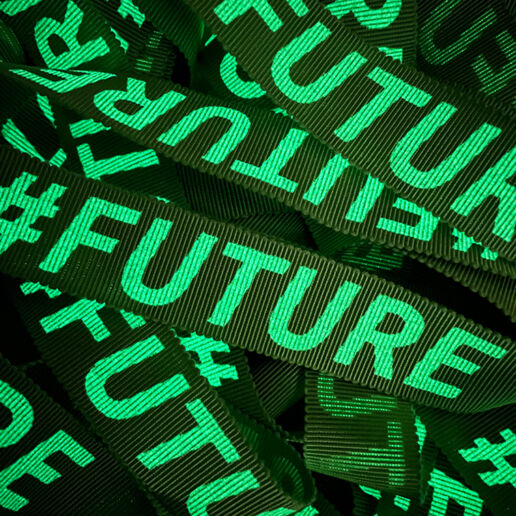
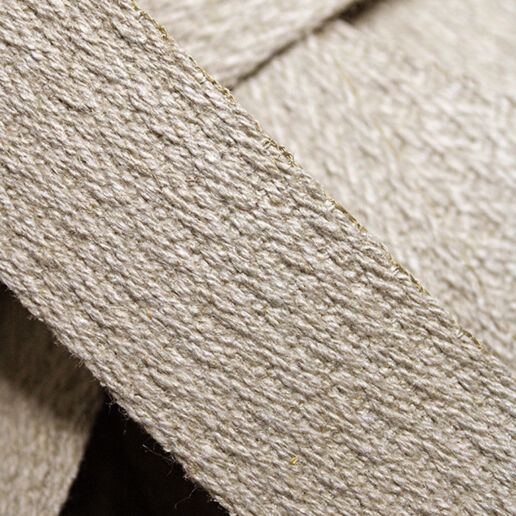
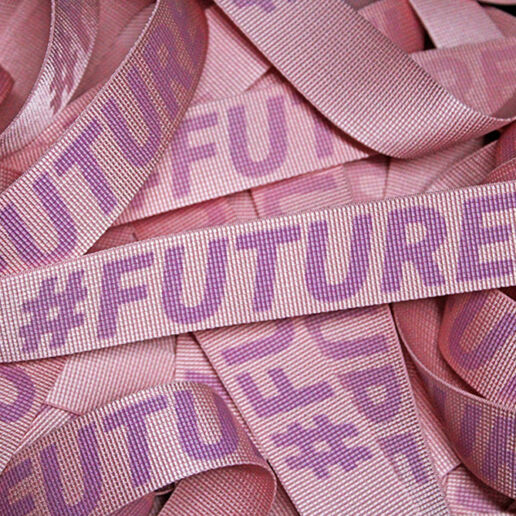
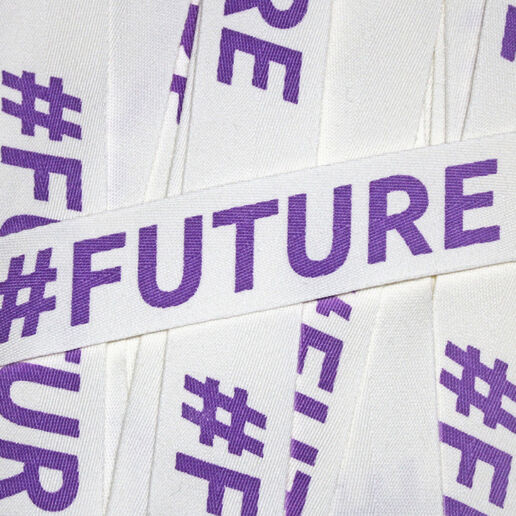
————————————————————————–
ANKER KNOPF
Natur und Nachhaltigkeit ist nach wie vor omnipräsent und bleibt das für das Weltklima entscheidende Thema. Biologisch abbaubares Hornimitat und echte Steinnussknöpfe setzen die Highlights ihrer diesjährigen Kollektion für Spring/Summer. Inmitten klassischer und simpler Formen bilden Schmuckknöpfe das geeignete Mittel für ein Trading-Up. Echt Perlmutt ist dabei ein Must-Have im Premium-Segment. Stoffüberzogene Accessoires erleben eine Renaissance – sowohl in der Womens- als auch in der Menswear.
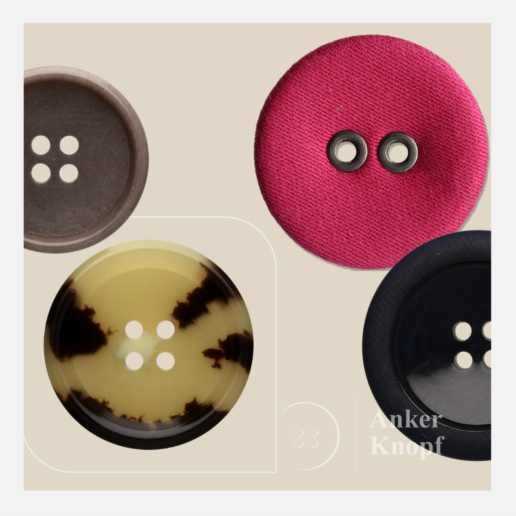
————————————————————————–
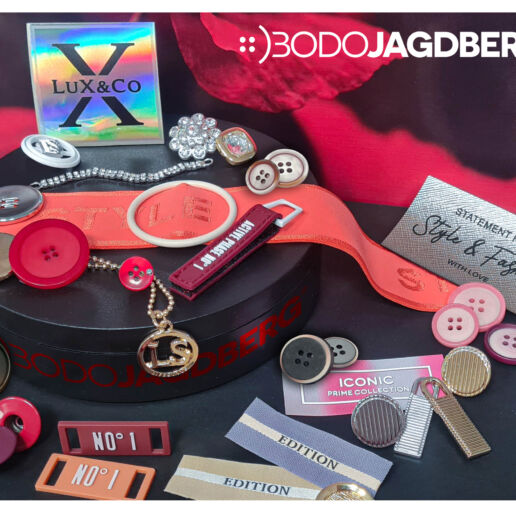
BODO JAGDBERG
Ganz nach dem Motto „more is more“ setzt BODO JAGDBERG diese Saison auf ausgefallene Schmuckdetails wie Strass oder Hologlitzer in Knöpfen und Labelmaterialien für den Glam Style. Wegweisende Trendfarben wie Sunset Coral und Barbie-Pink spiegeln sich in Allover-Looks wider und unterstützen durch edle Hängegalvaniken wie Icegold und Chrom als Eyecatcher den Easy City Look. Highlights der Sommerkollektion 2025 sind vor allem elastische Bänder in den Tönen Aquatic und Chlorophyll, die sowohl für die Comfortwear, als auch für den Businessbereich von großer Relevanz sind.
————————————————————————–
BORNEMANN – ETIKETTEN
Bornemann-Etiketten bietet Kunden weltweit die bestmögliche Lösung, ihre Marke nach außen zu tragen. Die Dynamik der Märkte und die Individualität der Brands erfordert dabei Kreativität und Effizienz gleichermaßen. Diesem Anspruch begegnet das Traditionsunternehmen aus Wuppertal mit konsequenter Innovation, vor allem wenn es um die Digitalisierung der Prozesse geht. Lassen Sie sich von der Vielfalt der digitalen Tools beeindrucken und entdecken Sie mit Bornemann Ihre maßgeschneiderte digitale Lösung.
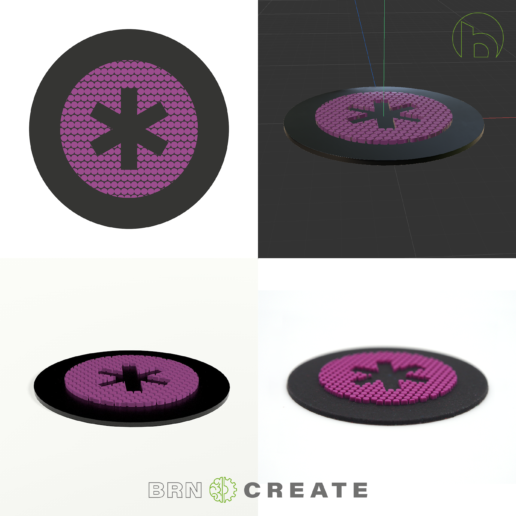
————————————————————————–
CADICA GROUP
Mit der neuen Cadica-Kollektion FORM EXPLORATION tauchen Sie ein in die Welt der Kunst. Inspiriert von 20 verschiedenen repräsentativen Styles, erzählt jede Mode-Accessoire-Linie eine einzigartige Geschichte und spiegelt verschiedene Merkmale des künstlerischen Ausdrucks wider. Von der Pixelkunst bis zum Aquarell, von der Skizze bis zum Pointillismus, diese Accessoires vereinen Innovation und Nachhaltigkeit. Die Farbpalette ist frisch, trendy und voller Personality. In der FORM EXPLORATION-Kollektion verschmelzen Zeitgeist, sorgfältige Materialforschung und Nachhaltigkeit.
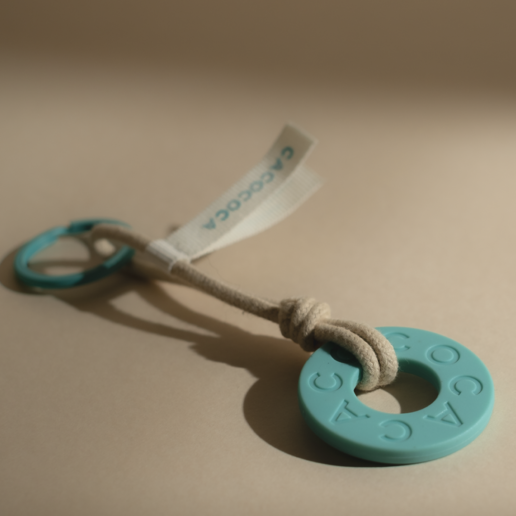
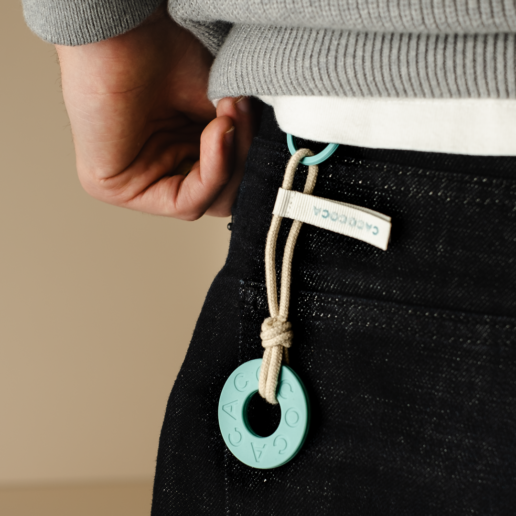
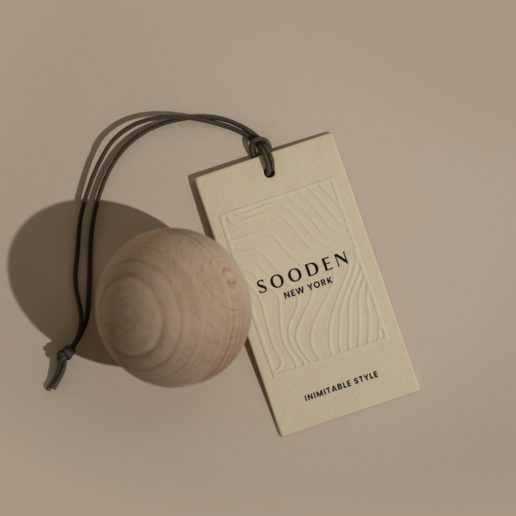
————————————————————————–
DAS KÖNNTE SIE AUCH INTERESSIEREN
Additionals Trends Spring.Summer 26 – Part 1
5. January 2025
The beauty of the Opposite Collection lies in its ability to tell a story.
KEYHOUSE NEWS – WKS
5. January 2025
WKS Sustainable Textile Solution has been the unique service provider along the entire textile supply chain for over 60 years.
TEXroad: Putting the data in circular textiles
4. January 2025
The Data Hub tackles challenges in the post-consumer value chain such as a lack of transparency in textile flows, inconsistent data shared between partners, and inefficient reporting to the public sector.
Venus In Fury of Sustainable Innovation
4. January 2025
Marking a seismic shift from traditional textile creation, Venus In Fury’s approach starts not with a sketch, but with a selection of natural materials like Dutch wool and seaweed.
KEYHOUSE NEWS – FELDE FIBRES
20. December 2024
This innovative quality offers unmatched fineness, handfeel, and appearance, unlocking new application possibilities and reviving the long-overlooked hemp plant.
LOOPER Textile Co. – A second life for unwanted garments
17. December 2024
Looper Textile Co. is a trusted partner in preparing garments for the next phase of their lifecycle. The bold ambition and strong heritage of this young company lies the understanding...
SPRING.SUMMER 26 FABRIC HIGHLIGHTS & MATERIAL NOVELTIES – PART II
16. December 2024
Beautiful and contemporary prints add fresh and vibrant touches to any garment. Wild silks are offered alongside tulles with low or zero formaldehyde.
New Fabric Collection of BLOOMATI by Carvema
15. December 2024
Innovation is at the heart of our collection. We have explored new textile technologies that bring futuristic properties to fabrics.
New Fabric Collection by Paulo de Oliveira
13. December 2024
Paulo de Oliveira is a reference in sustainable production, focusing on sustainable raw materials produced in Europe by ecological processes.
SPRING.SUMMER 26 FABRIC HIGHLIGHTS & MATERIAL NOVELTIES – PART I
12. December 2024
Fashionable woven and knitted fabrics made of wool, cotton, silk, blends and functional fibres are presented by our international suppliers..
Fabric Trends Spring.Summer 25 - Part I
In the FABRICS Area, around 600 international suppliers present their material innovations for all apparel segments. The complete product portfolio of fashionable woven and knitted fabrics made of wool, cotton, silk, blends and functional fibres is represented here. For the Spring.Summer 25 season, we present some highlights from international producers in our FABRICS blogposts:
6DIAS
6Dias exhibits its new Spring Summer 2025 collection with items it produces and sells. Lots of variety of products, such as weaving, jacquard, denims, embroidery, pleats, etc. Visit their showroom in Trofa – Portugal and design your collection with this Portuguese premium supplier. You can get in touch with their team directly email to geral@6dias.pt.
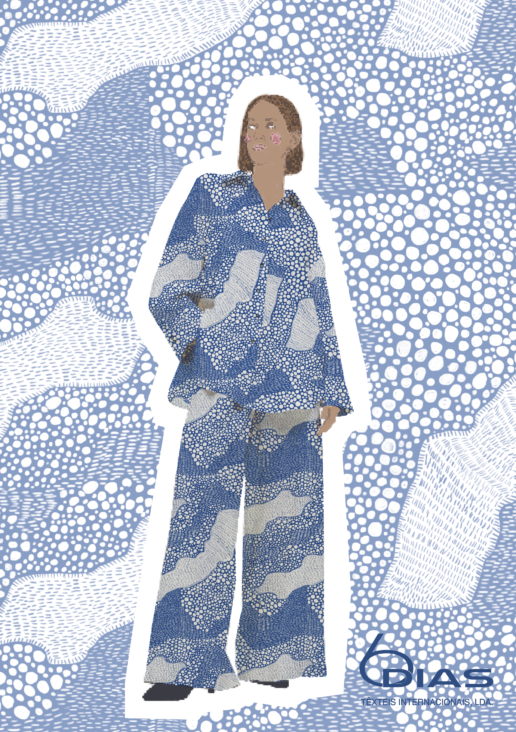
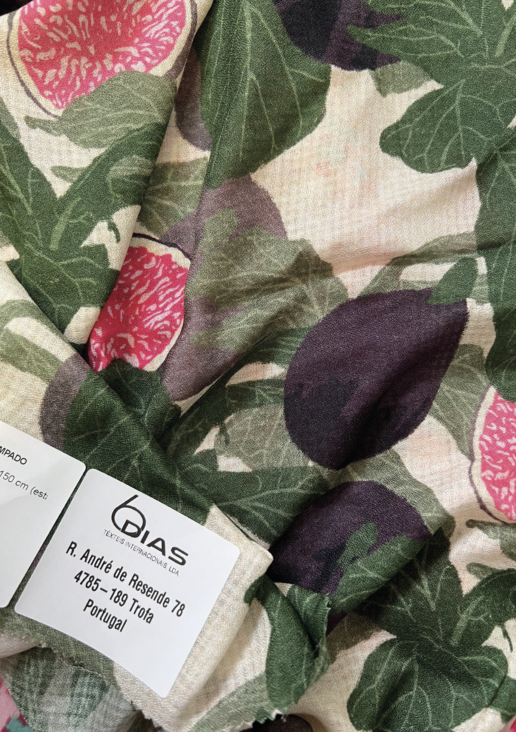
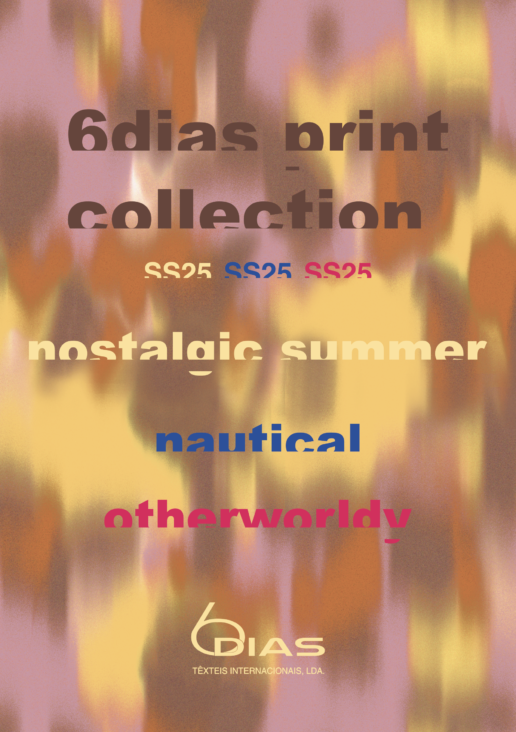
BITZER + SINGLE
For spring/summer 25 season, Bitzer + Single are still focusing on short distances, mainly European products and open communication with their customers. Additionally, to the traditional collections for sportswear, lingerie and healthcare, they now offer certified accessories for the official tendering sector. With over 60 years of expertise in the textile processing industries, they will find the right solution for your needs.
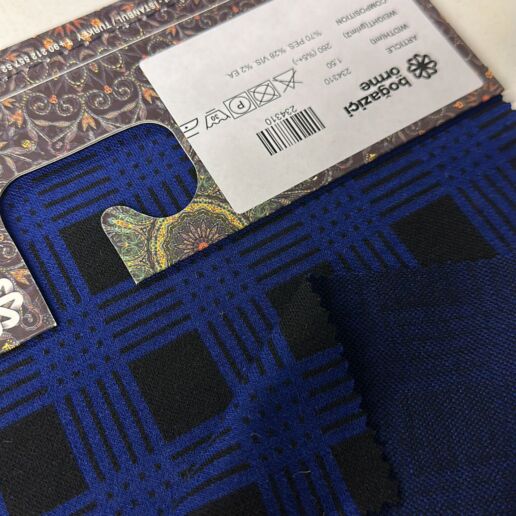
BOGAZICI ÖRME
Elevate your surroundings with the standout knitted jacquard fabric innovations for the Spring/Summer 2025 season from Bogazici Örme. They proudly introduce eco-friendly options. Featuring captivating designs and a perfect harmony of vibrant colors, their collection offers nature-inspired motifs and environmentally conscious choices, seamlessly merging traditional and modern aesthetics. Their exclusively knitted jacquard fabrics reflect the essence of trendsetting sophistication for the upcoming season.
CANCLINI1925 – PER LEI – BLUE1925
The new CANCLINI1925 collection for Spring.Summer 25 craves positivity and comes in renewed graphics, colours and weights that are inspired and influenced by Lake Como. Summer is the perfect time to dare, to have character, to give visibility to the shirt. Discover the new collection from the leading traditional Italian producer of high-end fabrics at the studio of Klaas + Hesse.
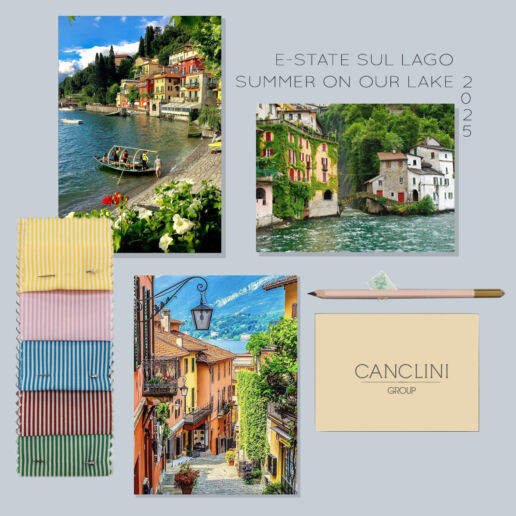
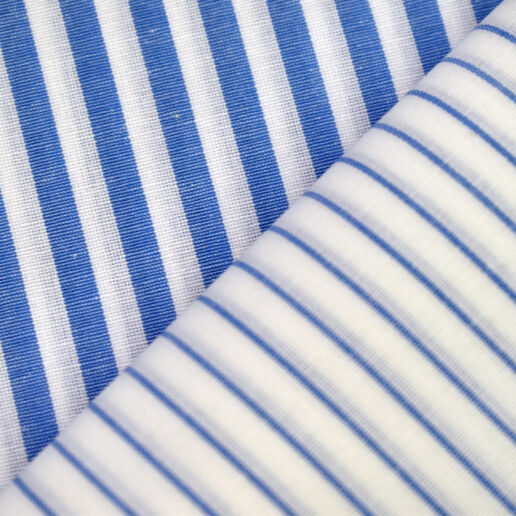
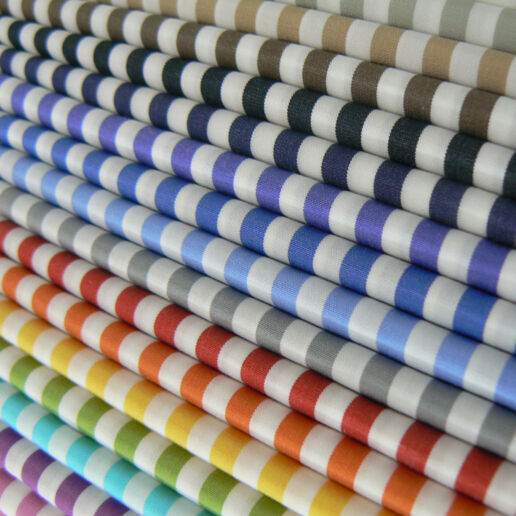
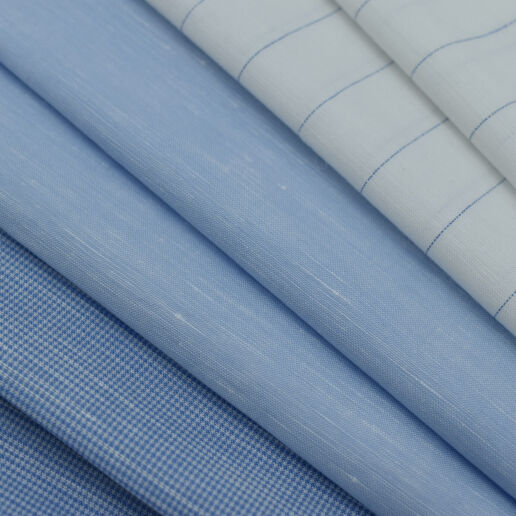
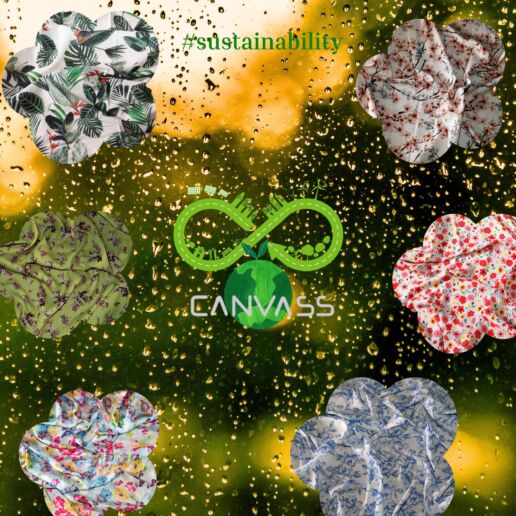
CANVASS TEKSTIL
With awareness of responsibility towards a clean world, natural life and future generations, the priority of Canvass has always been to combine sustainable yarns and natural fibers with rich materials in aesthetic harmony. Their 2025 Spring-Summer products are prepared according to this principle. They provide sustainable production and consultancy services in the fields of yarn, fabric and apparel to textile companies in various countries of the world.
Das könnte Sie auch interessieren
Additionals Trends Spring.Summer 26 – Part 1
5. January 2025
The beauty of the Opposite Collection lies in its ability to tell a story.
KEYHOUSE NEWS – WKS
5. January 2025
WKS Sustainable Textile Solution has been the unique service provider along the entire textile supply chain for over 60 years.
TEXroad: Putting the data in circular textiles
4. January 2025
The Data Hub tackles challenges in the post-consumer value chain such as a lack of transparency in textile flows, inconsistent data shared between partners, and inefficient reporting to the public sector.
Venus In Fury of Sustainable Innovation
4. January 2025
Marking a seismic shift from traditional textile creation, Venus In Fury’s approach starts not with a sketch, but with a selection of natural materials like Dutch wool and seaweed.
KEYHOUSE NEWS – FELDE FIBRES
20. December 2024
This innovative quality offers unmatched fineness, handfeel, and appearance, unlocking new application possibilities and reviving the long-overlooked hemp plant.
LOOPER Textile Co. – A second life for unwanted garments
17. December 2024
Looper Textile Co. is a trusted partner in preparing garments for the next phase of their lifecycle. The bold ambition and strong heritage of this young company lies the understanding...
SPRING.SUMMER 26 FABRIC HIGHLIGHTS & MATERIAL NOVELTIES – PART II
16. December 2024
Beautiful and contemporary prints add fresh and vibrant touches to any garment. Wild silks are offered alongside tulles with low or zero formaldehyde.
New Fabric Collection of BLOOMATI by Carvema
15. December 2024
Innovation is at the heart of our collection. We have explored new textile technologies that bring futuristic properties to fabrics.
New Fabric Collection by Paulo de Oliveira
13. December 2024
Paulo de Oliveira is a reference in sustainable production, focusing on sustainable raw materials produced in Europe by ecological processes.
SPRING.SUMMER 26 FABRIC HIGHLIGHTS & MATERIAL NOVELTIES – PART I
12. December 2024
Fashionable woven and knitted fabrics made of wool, cotton, silk, blends and functional fibres are presented by our international suppliers..
A Life As An Art Project - Sustainable Innovations
To artist Sophie Conroy, her life is an experiment. In her latest work, she chose to live without her own house for 6 months in Eindhoven, on a quest to find more connected ways of living. During this time, she experienced living amidst chaos and connection. She found various forms of shelter and witnessed the beauty of her community. Through observing her fundamental human needs, she aims to grasp their authentic essence. Embracing the discomfort of houselessness allowed her to uncover valuable insights, challenging traditional notions of art, ownership, and community.
Textiles, for Sophie, become a medium that provides protection while revealing the vulnerability of the self. Confronting existential challenges during her houselessness, textiles transform into symbols of resilience and self-discovery.
Sophie crafts her textiles using primarily found materials, notably her own clothing. She believes in the power of textiles as a communication tool, using them to capture the essence of community and home. She peels away the capitalist consumer dimension of fabric, recognising it as a fundamental connection between body and environment.
Sophie Conroy doesn’t just create artworks; she constructs spaces for dialogue and interaction. Her installations incorporate videos, tapestries, drawings, writing and projections, creating a captivating fusion of textiles and visual art. The space and Sophie herself become part of the art, inviting observers to immerse themselves in this interactive environment.
Sophie emphasises that our focus should not be on designing more ‘stuff’ but on creating new perspectives and ways of seeing. Through creating tools to shift our perspectives, Sophie believes we can move away from the current patterns of exploitation, isolation, and consumption and towards societies grounded in trust, joy, and connection.
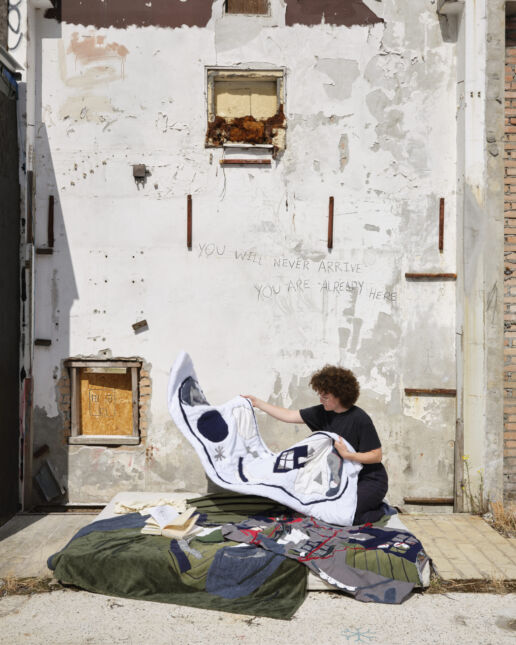
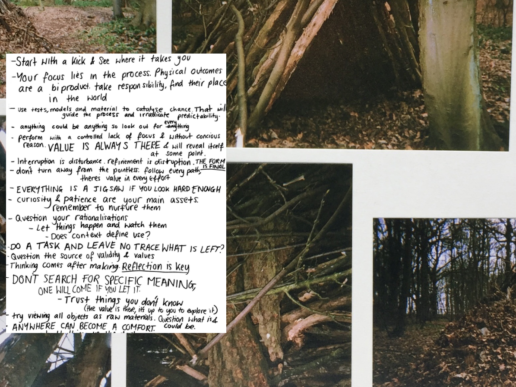

———————————————————————–
THIS MIGHT ALSO BE INTERESTING FOR YOU
The Source Collection’s News: EAST
16. January 2025
Fashion is not only about following trends, but also about expressing your creativity and personality.
KEYHOUSE NEWS – PaperTale
15. January 2025
Whether you’re exploring product traceability, seeking to streamline compliance, or driving sustainability, PaperTale provides the tools to stay ahead in a rapidly evolving industry.
Additionals Trends Spring.Summer 26 – Part 6
15. January 2025
From timeless luxury to durable workwear solutions, each collection reflects their commitment to responsible sourcing and innovative design.
CLOUDWOOL - Sustainable Innovations
Cloudwool, presented by Martin Brambley, is an oasis of sustainability in the textile universe, introducing pure, local wool of new quality to the market. The projects name symbolises not just an island in the sky but also the unity of environmentally conscious production and high-quality materials.
In a time where natural wool is often imported and blended with synthetic fibers, Cloudwool relies on local resources and fights against the neglect of local sheep farmers’ wool. The sustainable angle of Cloudwool emerges from the desire to bring local fibers to the market in new and exciting forms. The 100% local wool, typically considered waste, is transformed into a super-soft and durable fabric through nonwoven technology – without burdening the environment. Natural, breathable, and comfortable, Cloudwool integrates the natural properties of wool into the material to make it as exceptional as possible.
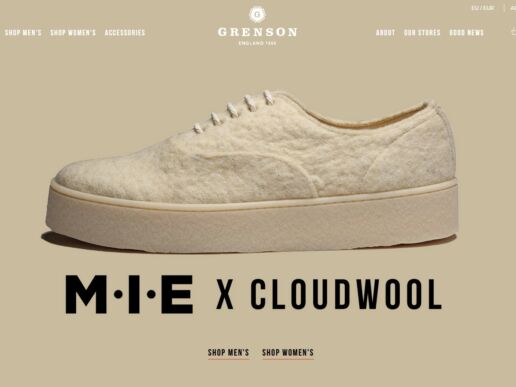

From farm to fabric, Cloudwool relies on local resources, creating a traceable supply chain in collaboration with European sheep farmers. The company pays farmers up to 5 times more than the market price for their wool and produces Cloudwool locally using energy-efficient processes. Together with Cloudwool, you’re not just shaping clothing but also reshaping silhouettes and textures. This isn’t just ordinary wool fabric – with more personality and far fewer post-processing possibilities, the potential is endless.
Doppelhaus, the company behind Cloudwool, was founded by Martin Brambley and Yolanda Leask. In a world where sustainable fashion must be affordable, they are committed to creating sustainable materials for a circular, low-carbon fashion industry of the future. Their innovative approach utilizes efficient nonwoven textile production techniques in line with Cradle-to-Cradle principles.
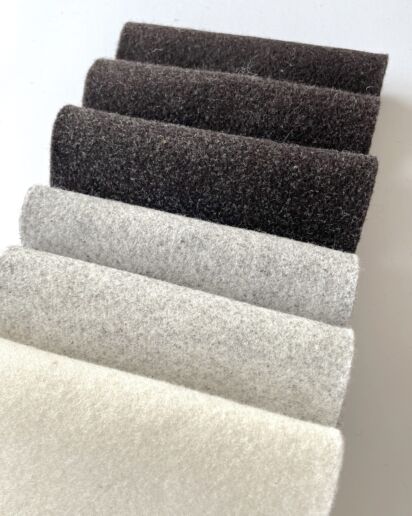
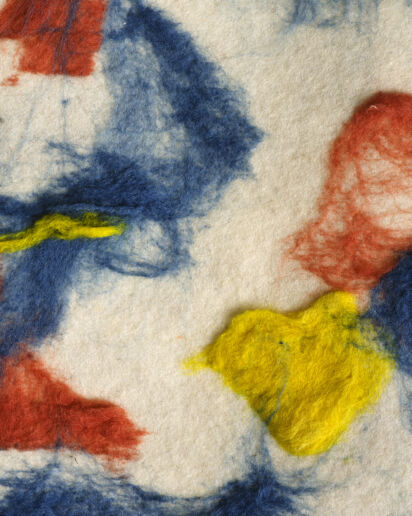
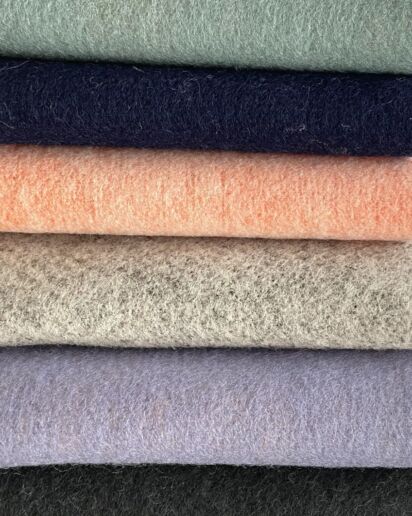
———————————————————————–
THIS MIGHT BE ALSO INTERESTING FOR YOU
The Source Collection’s News: EAST
16. January 2025
Fashion is not only about following trends, but also about expressing your creativity and personality.
KEYHOUSE NEWS – PaperTale
15. January 2025
Whether you’re exploring product traceability, seeking to streamline compliance, or driving sustainability, PaperTale provides the tools to stay ahead in a rapidly evolving industry.
Additionals Trends Spring.Summer 26 – Part 6
15. January 2025
From timeless luxury to durable workwear solutions, each collection reflects their commitment to responsible sourcing and innovative design.
CO2 Tex - Sustainable innovations
Within the BIOTEXFUTURE cluster, the CO2Tex project introduces innovative paths for sustainable elastic yarns. In the context of the overarching BIOTEXTFUTURE project, the Institute for Textile Technology (ITA) and the Chair for Technology and Organizational Sociology (STO) at RWTH Aachen, together with adidas, strive to achieve the transition of the entire textile value chain to bio-based materials.
CO2Tex stands out as a central project within BIOTEXFUTURE, focusing on CO2-containing thermoplastic polyurethane (TPU) as an alternative to conventional elastane. This project revolutionizes elastic yarn production by eliminating toxic solvents, not only reducing environmental impact but also enabling potential industrial mass production.
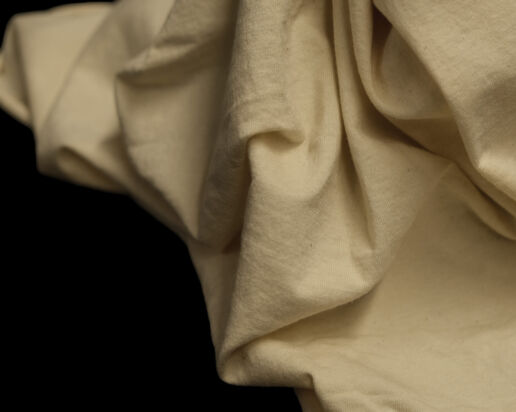
The overarching BIOTEXFUTURE project, led by ITA, STO, and adidas, aims for a swift translation of fundamental research into practical applications. Traditional textiles are to be replaced by sustainable, biobased materials, with CO2Tex playing a pivotal role by demonstrating advancements in the development of commercially viable elastic filament yarns from CO2-containing TPU.
CO2Tex’s goal by October 2024 is to establish these environmentally friendly yarns on an industrial scale, replacing conventional elastane. The project not only focuses on technological advancements but positions itself as a pioneer for sustainable development across the textile industry. By integrating CO2Tex into BIOTEXFUTURE, the vision of an eco-friendly and bio-based future in the textile industry takes a significant step forward.
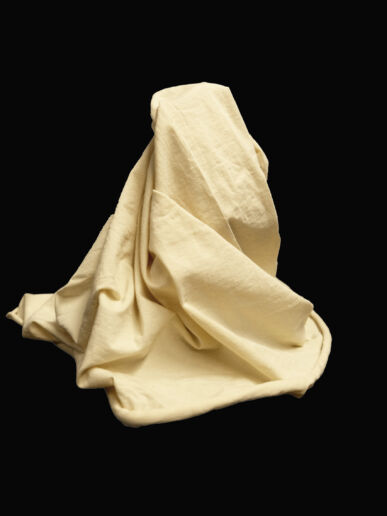
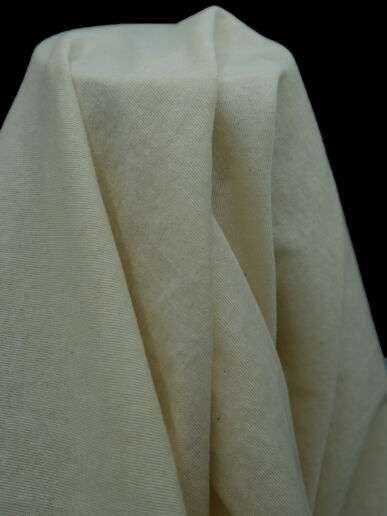
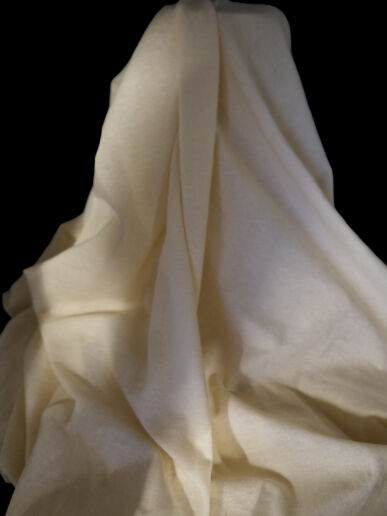
———————————————————————–
THIS MIGHT BE ALSO INTERESTING FOR YOU
The Source Collection’s News: EAST
16. January 2025
Fashion is not only about following trends, but also about expressing your creativity and personality.
KEYHOUSE NEWS – PaperTale
15. January 2025
Whether you’re exploring product traceability, seeking to streamline compliance, or driving sustainability, PaperTale provides the tools to stay ahead in a rapidly evolving industry.
Additionals Trends Spring.Summer 26 – Part 6
15. January 2025
From timeless luxury to durable workwear solutions, each collection reflects their commitment to responsible sourcing and innovative design.
KEYHOUSE 2024 trends spring.summer25
In the atmospheric industrial charm of KEYHOUSE, Hall 5, progressive suppliers and global players from cross-industry sectors will be showcasing their latest new developments and innovations. On over 1,000 square metres, you will find trend-setting future fabrics and new process technologies – be it in terms of sustainability, circular economy, digitalisation & AI, traceability, textile dyeing or finishing. Staged as an interactive think tank, future-oriented show cases will be in the spotlight alongside sustainable innovations.
KEYHOUSE is also home to the main lecture forum of MUNICH FABRIC START with exclusive keynotes, panel discussions, trend presentations, Q&A sessions & expert talks by international industry insiders. Be inspired by the wide range of events at KEYHOUSE.
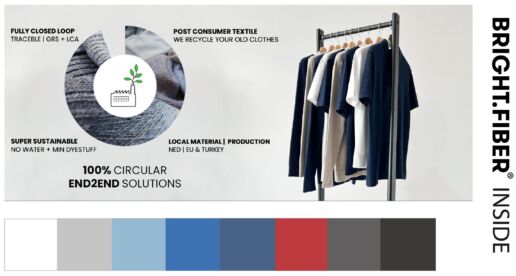
BRIGHTFIBRE
BRIGHT.FIBER® INSIDE: 100% circular – end2end – solution provider. We turn your old clothes into new textile. Brightfiber Textiles works in a fully closed loop and turns post consumer textile waste from the end consumer, into brand new collections. Brightfiber Textiles works with local waste streams and automatically sort, clean and process material into BRIGHT.FIBER’s in their circular factory in Amsterdam.100% circular stock yarns are produced in beautiful, contemporary and seasonal colors. BRIGHT.FIBER minimizes the use of virgin resources and offers circular and sustainable end2end solutions.
EEDEN
eeden enables the production of fibers such as Lyocell, Viscose, or Polyester from end-of-life textiles. They have developed a holistic upcycling technology to extract cellulose and polyester from discarded fabrics. Their process is in line with EU regulations, conserving resources and offering a scalable, circular solution to the waste challenges of the textile industry. Visit them at the KEYHOUSE and learn more about their upscale.
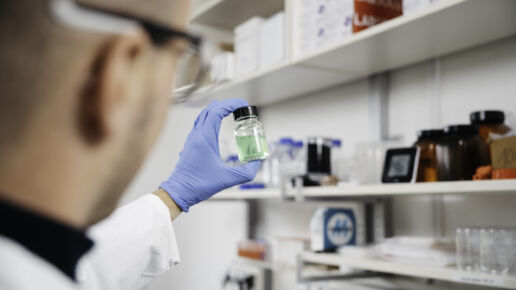
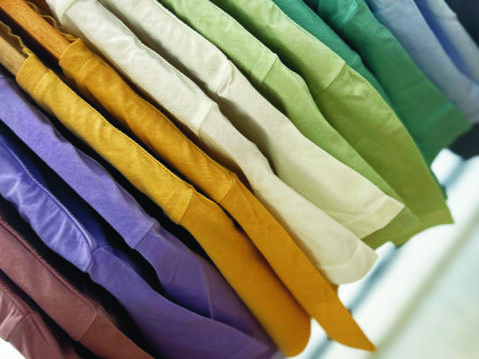
EYAND
EYAND presents a collection with a large range of natural colours, all with very good colour fastness. Certified with Oeko-tex and GOTS. Their natural dye cotton, wool, cashmere and silk garments and offer a full package service from the knitting of the fabric, Inhouse workshop for pattern making and proto samples and garment dyeing with their natural colours.
SOKO
Following its innovative nature, the Italy based chemical company Soko has recently launched the “Projects Division” which aims to become the research department open to collaborations – on a project basis – for all players in the textile industry. The Projects Division will evaluate, analyse and seek solutions for specific targets which will be rised from the corresponding partner or Soko itself. The work will range from the optimisation of the washing process, to new finishing techniques and any topic which may constitute a challenge or a discussion.
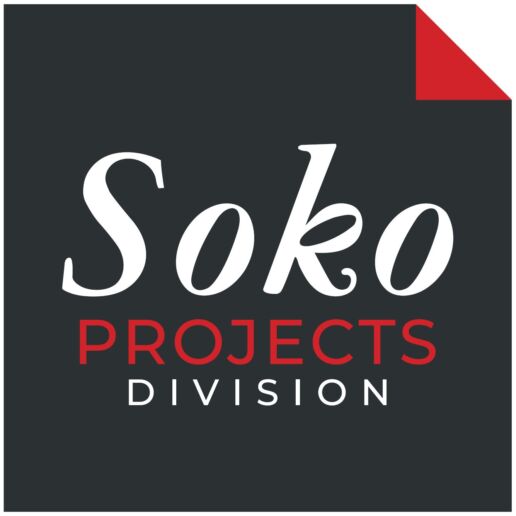
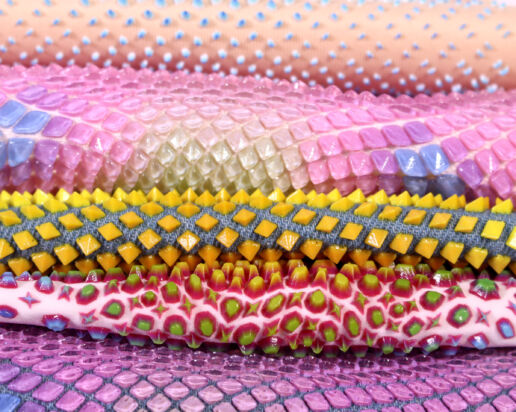
STRATASYS
Stratasys, a 3D printing solutions pioneer, introduces the first 3D printer designed for direct-to-textile printing: the J850™ TechStyle™. Powered by their 3DFashion™ technology, it is already revolutionizing prototyping and manufacturing in the fashion and automotive sectors, enabling unparalleled design complexity and customization. Their technology accelerates lead times, enhances design flexibility, and supports sustainable production, with more applications continually emerging.
WKS
COMBAT CLOTHING WASTE – WKS Group, an established textile solutions provider with 7 European locations, offers an extensive range of sustainable services throughout the fashion supply chain. These include quality assurance, reverse logistics, and personalized recovery strategies for damaged bulk productions. Introducing RE-VOGUE VENTURES, the circular initiative for the resale and refurbishment of second-hand garments involves the management of trade-ins professional renewal/ repair, and re-commerce of pre-loved clothing. This endeavour underscores WKS Group’s commitment to reducing clothing waste by transforming secondhand items into first-choice options, maximizing the lifespan of each garment.


YOONA.AI
yoona.ai Suite seamlessly merges Data Analytics and Generative AI, revolutionizing design as a collaborative interplay between human creativity and technological expertise. Every stroke, colour, and form is shaped by data-driven insights and empowered by AI-generated possibilities. This innovative synergy transforms design into a dynamic, strategic process, aligning aesthetics with market trends. Yoona AI Suite charts a course toward an evolved design landscape that captivates aesthetically while staying finely attuned to the pulse of the market – a fusion where human ingenuity dances alongside technological advancement, shaping a visionary future for design.
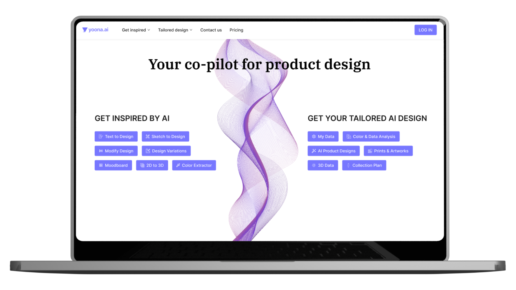
Das könnte Sie auch interessieren
Additionals Trends Spring.Summer 26 – Part 1
5. January 2025
The beauty of the Opposite Collection lies in its ability to tell a story.
KEYHOUSE NEWS – WKS
5. January 2025
WKS Sustainable Textile Solution has been the unique service provider along the entire textile supply chain for over 60 years.
TEXroad: Putting the data in circular textiles
4. January 2025
The Data Hub tackles challenges in the post-consumer value chain such as a lack of transparency in textile flows, inconsistent data shared between partners, and inefficient reporting to the public sector.
Venus In Fury of Sustainable Innovation
4. January 2025
Marking a seismic shift from traditional textile creation, Venus In Fury’s approach starts not with a sketch, but with a selection of natural materials like Dutch wool and seaweed.
KEYHOUSE NEWS – FELDE FIBRES
20. December 2024
This innovative quality offers unmatched fineness, handfeel, and appearance, unlocking new application possibilities and reviving the long-overlooked hemp plant.
LOOPER Textile Co. – A second life for unwanted garments
17. December 2024
Looper Textile Co. is a trusted partner in preparing garments for the next phase of their lifecycle. The bold ambition and strong heritage of this young company lies the understanding...
SPRING.SUMMER 26 FABRIC HIGHLIGHTS & MATERIAL NOVELTIES – PART II
16. December 2024
Beautiful and contemporary prints add fresh and vibrant touches to any garment. Wild silks are offered alongside tulles with low or zero formaldehyde.
New Fabric Collection of BLOOMATI by Carvema
15. December 2024
Innovation is at the heart of our collection. We have explored new textile technologies that bring futuristic properties to fabrics.
New Fabric Collection by Paulo de Oliveira
13. December 2024
Paulo de Oliveira is a reference in sustainable production, focusing on sustainable raw materials produced in Europe by ecological processes.
SPRING.SUMMER 26 FABRIC HIGHLIGHTS & MATERIAL NOVELTIES – PART I
12. December 2024
Fashionable woven and knitted fabrics made of wool, cotton, silk, blends and functional fibres are presented by our international suppliers..
Digitale Klarheit im Design - ASSYST
Digital processes elevate design to a new level, but only when the result is right and quick. To ensure the flow of ideas and data, Style3D | Assyst passionately develops and confidently explores new paths.
In the 3D simulation, the dress moves as if caught in a breeze. Whether it‘s a skirt or a down coat, the movement looks so realistic that one tends to forget the computer. Everyone in design, technical development, and pattern teams is meant to experience this seamless connection between the digital and the real world. Fabric, human, and pattern are realistically represented, pushing the boundaries of technology. The results are captivating, opening up new possibilities in clothing development and fabric design.
Digital fabrics facilitate collaboration
With both physical and digital fabric versions, manufacturers can provide better guidance. At events or in their own showroom, fabrics are collectively examined. The scanned digital version can be recolored, enlarged, experimented with in designs, and shared with colleagues on-site or later in the company. Once everyone agrees, the fabric is purchased and ideally produced afterward.
3D design and 2D patterns merge
A common scenario: everything looks good digitally until the pattern comes into play. Suddenly, a seam line on the back or inserts on the sleeves are necessary, disrupting the design idea. Numerous approval rounds like these are required in developing a new collection. It‘s much faster when the design interacts directly with the production-ready pattern. The designer doesn‘t need to switch to the CAD system; the pattern stays in the background, automatically updating and reapproving for significant changes.
3D clothing reaches customers
From showroom to eShop or store, it can take weeks … or just days. With the right tools, 3D designs transform into high-quality marketing and sales visualizations. All with the characteristics of the digital product matching the real one, complemented by suitable digital experiences.
Artificial Intelligence begins to create value
When rapid new ideas are needed, inspiration is crucial. AI, like in a brainstorming session, helps generate fresh ideas and refine one‘s concept. Designs can be created quickly, and unsuitable versions can be sorted out promptly. The right design can be replicated and further refined.
Fashion undergoes sustainable change
When design (3D) and production (2D) seamlessly connect, the apparel industry changes significantly. Design, pattern, and technical development can work more easily, sustainably, and cost-effectively, resulting in less fabric and fewer patterns throughout the process. The remarkable aspect is that this revolution requires minimal effort for individuals. Everyone can continue working in their familiar systems, and the integration of systems leads to a closer collaboration with clear results. Each digital design matches the real product, providing extra clarity that is particularly valuable for design teams, thanks to the benefits of digitization.
WE LOOK FORWARD TO WELCOMING YOU IN
→ HALL 2 | D 24 or digitally at www.assyst.de
PROGRAM:
AI for inspiration and promotion
Digital Knitwear Design with KM.On
3D/2D.Connect – Design with product-ready pattern
Digital Fabric for brands and manufacturers
Collaboration – on site, remote or worldwide
OUR PRESENTATIONS IN THE KEYHOUSE:
Design from idea to shelf – the new possibilities for designers
with AI and 3D/2D.Connect from Style3D | Assyst
Global design & production – 3D/2D CAD in the supply chain
[Best Practice]
Discover more industry-changing innovations at our upcoming trade fairs:
ORTA x Long John
ORTA x Long John Presents: The biggest sustainable jeans!
The well-known Turkish denim manufacturer ORTA, celebrated its 70th anniversary last year teams up with Wouter Munnichs, founder of online denim magazine Long John and freelance denim specialist for brands and retail, to create the biggest sustainable pair of blue jeans ever made. This huge collaboration jeans will be on display at denim fabric trade show Bluezone in Munich, Germany on the 23rd and 24th of January, 2024.
This January, ORTA and Long John will join forces in a very special jeans collaboration. Together they developed the biggest sustainable jeans ever produced to set a new milestone within the denim industry. This display jeans is made with a waist size 133 and a total length of around 4,5 meters. For the inspiration of this collaboration jeans, they looked at the past when huge display jeans were made as a promotion for a denim brand. These originals were used to showcase a jeans brand in a unique and unmissable way in front of retailers and at rodeo events in the West of America from the 1920’s onwards.
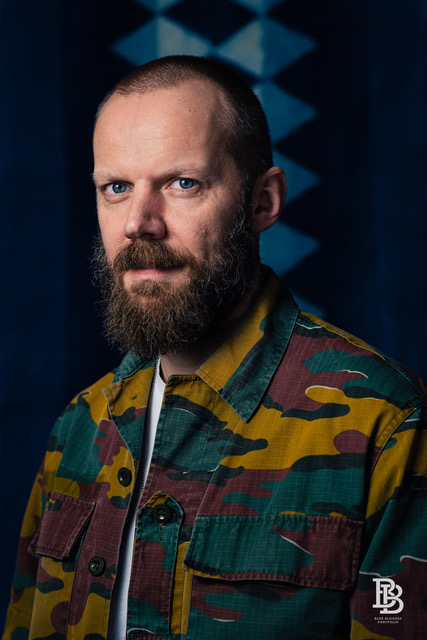
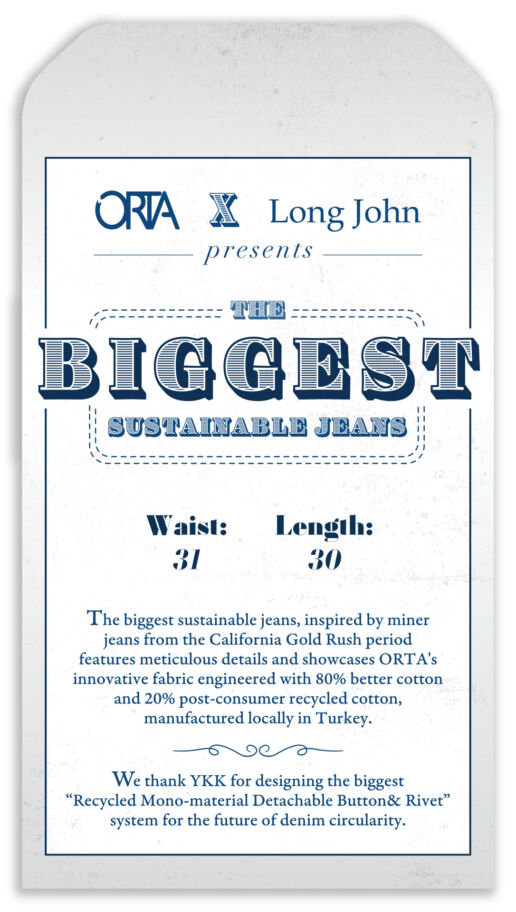
Showcasing the new sustainable denim fabric
The idea of making something that stands out came when ORTA developed a new sustainable denim fabric with code 4853A, colored Steel Blue. This rigid 2/1 Z twill denim fabric weighs 10.6 oz and is made with a composition of 80% better cotton + 20% post-consumer recycled cotton. The fibers as well as the fabric were all manufactured in Turkey locally. As a long partner of ORTA, Long John sat down with the ORTA to think about a way they could present this innovative denim fabric that can’t be missed by each visitor of the Bluezone trade show in Munich. Soon, they were thinking of creating this enormous pair of jeans.
The inspiration for the display jeans
The design of the ORTA x Long John display jeans is inspired on the original miner jeans that were worn during the kick-off of the so-called ‘Gold Rush’ period around 1850 in California, USA. During this period, many people from all over the world came to California when gold was discovered in the mines. To get the job done, a sturdy and durable pair of blue jeans was needed. This is seen by many as the kick-off of the history of denim. The rest is history.
The ORTA x Long John display jeans is produced with an eye for detail, just like the originals. Key detail features on this pair are included such as one back pocket, a cinch back, suspender buttons on the waistband, and even a crotch rivet on the front. Also, for this display pair, a huge hangtag is produced, the same as a back patch from sustainable cotton fabric showing both ORTA and Long John logos.
Displayed at Bluezone
The biggest sustainable jeans ever produced by ORTA x Long John will be showcased for the very first time at the denim fabric trade show Bluezone in Munich on the 23rd and 24th of January. Don’t miss this chance to get yourself photographed in front of this big 133-sized pair of blue jeans.
This might be also interesting for you:
Additionals Trends Spring.Summer 26 – Part 1
5. January 2025
The beauty of the Opposite Collection lies in its ability to tell a story.
KEYHOUSE NEWS – WKS
5. January 2025
WKS Sustainable Textile Solution has been the unique service provider along the entire textile supply chain for over 60 years.
TEXroad: Putting the data in circular textiles
4. January 2025
The Data Hub tackles challenges in the post-consumer value chain such as a lack of transparency in textile flows, inconsistent data shared between partners, and inefficient reporting to the public sector.
Venus In Fury of Sustainable Innovation
4. January 2025
Marking a seismic shift from traditional textile creation, Venus In Fury’s approach starts not with a sketch, but with a selection of natural materials like Dutch wool and seaweed.
KEYHOUSE NEWS – FELDE FIBRES
20. December 2024
This innovative quality offers unmatched fineness, handfeel, and appearance, unlocking new application possibilities and reviving the long-overlooked hemp plant.
LOOPER Textile Co. – A second life for unwanted garments
17. December 2024
Looper Textile Co. is a trusted partner in preparing garments for the next phase of their lifecycle. The bold ambition and strong heritage of this young company lies the understanding...
SPRING.SUMMER 26 FABRIC HIGHLIGHTS & MATERIAL NOVELTIES – PART II
16. December 2024
Beautiful and contemporary prints add fresh and vibrant touches to any garment. Wild silks are offered alongside tulles with low or zero formaldehyde.
New Fabric Collection of BLOOMATI by Carvema
15. December 2024
Innovation is at the heart of our collection. We have explored new textile technologies that bring futuristic properties to fabrics.
New Fabric Collection by Paulo de Oliveira
13. December 2024
Paulo de Oliveira is a reference in sustainable production, focusing on sustainable raw materials produced in Europe by ecological processes.
SPRING.SUMMER 26 FABRIC HIGHLIGHTS & MATERIAL NOVELTIES – PART I
12. December 2024
Fashionable woven and knitted fabrics made of wool, cotton, silk, blends and functional fibres are presented by our international suppliers..
Diversity in Dynamics
Marvelling at the levels of sophistication and innovation modern fabrics have attained and continue to breach, it is easy to forget that our relationship with textiles is one of the most intimate and primal ones we have. Granted, today’s creations are (thankfully) far removed from the scratchy cloth our ancestors wore huddled around the fire.
But over the course of time, our relationship with textiles has changed. While we have – technically and commercially – never been closer to textiles, ambitiously engineering fabric compositions to cater to an increased demand of sustainability, for instance, we are ironically also stepping further away emotionally from what was once – literally – closest to us. Today, our engagement with textiles is largely dependent on the prism through which we choose to experience and value it:
We have increasingly come to approach textiles as objects of research and science, questioning what characteristics new fabrics ought to have and how existing textiles can be improved to comply with the ever-changing demands of the market. Impressive examples of such science-led approaches are two projects within the BIOTEXFUTURE-cluster, led by the Institute for Textile Technology (ITA) and the Chair for Technology and Organizational Sociology (STO) at RWTH Aachen together with their industry partner adidas. Within BIOTEXFUTURE, they investigate the transition of the textile value chain to bio-based materials, including alternatives to conventional elastane (CO₂Tex), or the establishment of bio-based polymers in the industry (BIOBASE).
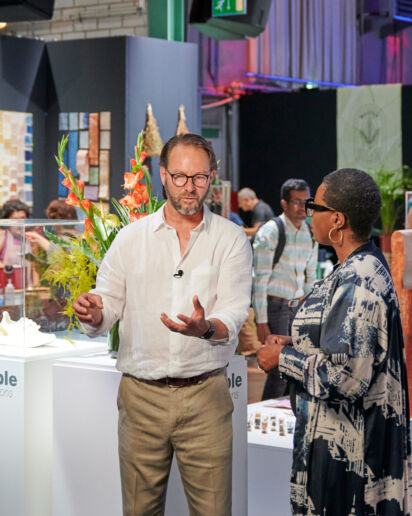
Of course, textiles also lend themselves to in-depth material exploration, analysing intricacies of production and means of (p)rethinking and challenging standards. Think of leather and its unique characteristics – who would have thought something strikingly similar could be crafted from a hemp plant, as illustrated by Lucas Fuhrmann’s “Revoltech”? Or going so far as to almost brutally decontextualize a biomaterial like feathers from their original purpose of insulation, submitting it completely to the functionality of aesthetics, as Suzanne Corcessin has done with “Being Plucked”.

Simon Angel
And still, textiles can be a means of social connection – looking at the emotional component of fabrics, their functionality and the effects they have on others in public and private interaction, reconstructing relationships and the marriage between human and textile. Beautiful testaments of such exploration are the works of Paul Schaffer, whose collection of woven fabrics aims to foster appreciation for the interconnectedness of organisms, Sophie Conroy, who investigates the metaphysical significance of textiles as a connection between the body and the environment, and Elizabeth Balado’s “Blooming Minds: Social Printing”.
Are we leading or following completely different dynamics? Are we at risk of sacrificing artistic intimacy for scientific progress? Are we winning or losing touch? It’s not about being right or wrong, but a question of prism. The Sustainable Innovations Forum proves that it is possible to navigate these different dynamics. Take Cloudwool, for example: with a diverse portfolio and numerous opportunities to work with their product, they have attracted the attention of the likes of Grenson and Balenciaga, effectively demonstrating that it IS possible to unite the different dimensions of soul and science, while successfully positioning their product at the same time.
Feel the difference in dynamics for yourself – come and meet us in the KEYHOUSE and experience the Sustainable Innovations Forum.
Best wishes,
Simon
INFORM & INSPIRE YOURSELF AT THE MUNICH FABRIC START
IN THE SUSTAINABLE INNOVATIONS AREA IN THE KEYHOUSE – H5!


